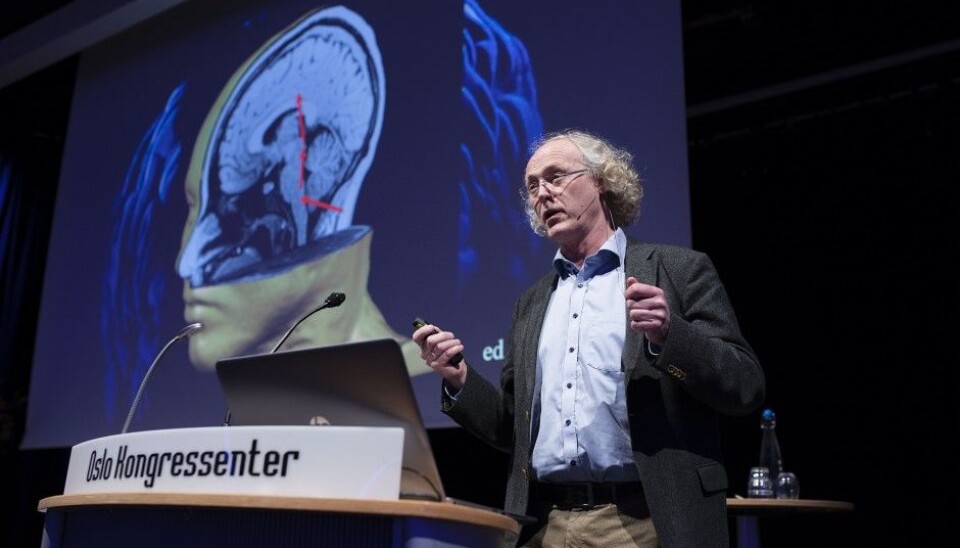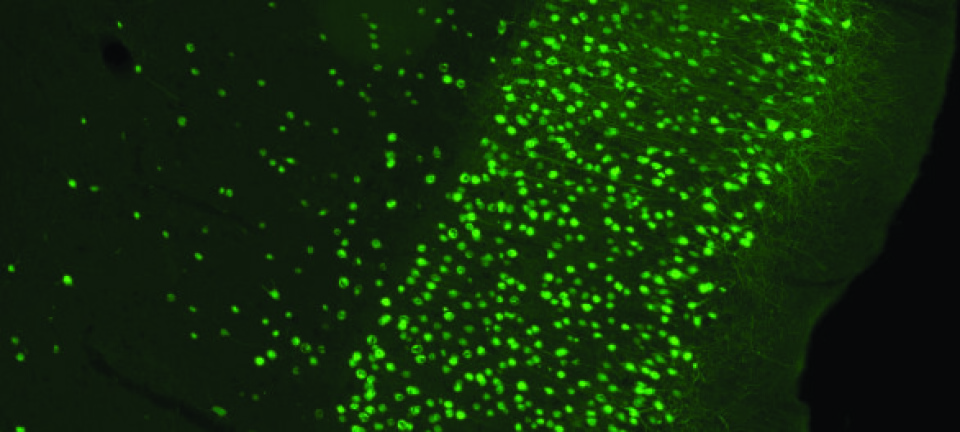
Why you should read and train to boost your brain
Exercise and reading create visible changes in the brain, according to research on nuns and rats in luxury cages. The brain can generate new brain cells and neural pathways, offering hope for stroke victims.
The brain can take over functions of injured parts of the brain. It can create new neural pathways and even make new brain cells, contrary to what scientists used to think.
"The brain is like the body – the more we exercise, the better it works," said Espen Dietrichs, a neurology professor, brain researcher and writer, in a lecture on how flexible the brain is. He spoke recently at an evening event in Oslo organized by the Norway’s national association for heart and lung disorders (LHL) and LHL Hjerneslag, as part of the fourth national conference on the heart and brain.
Dietrichs’ day job is as a researcher at the University of Oslo.
A number of examples from the research show just how adaptable the brain can be, he says.
Although brain cells cannot divide like other cells, they can develop in other ways.
Losing thousands of brain cells every day
We’re born with 130 billion brain cells, and unfortunately we lose thousands of them every day.
Already in our first year of life we’re losing brain cells. The number of nerve fibres also decreases after infancy as the brain develops.
The brain takes care of the nerve fibres that are being used and cleans out the rest.
"That's how the brain is formed," says Dietrichs.
How strabismus can lead to blindness in one eye
Stimulating the brain is crucial for preventing nerve fibres from disappearing due to disuse.
"We applied this approach in clinical medicine long before we realized exactly what was happening," said Dietrichs.
He illustrated this by explaining what happens to children who have strabismus, or eye misalignment.
Individuals with strabismus see double. Because it's so uncomfortable to see double, the brain tries to suppress the visual impressions from one eye to form a precise image.
"The nerve fibres in the sense field in the back of the brain then disappear on one side because the brain suppresses the signals. Then the child can become completely blind in one eye,” says the professor.
If, on the other hand, you cover one eye with a patch so that both eyes are covered alternately for one to two years, blindness can be avoided.
Finger exercises
In his lecture, Dietrichs explained what happens if you do finger exercises where the thumb meets the little finger, ring finger, middle finger and index finger in turn.
"If you do this a lot and over a long period of time, you see visible changes in the brain area that controls finger movements. The neural pathways get denser and more extensive,” he said.
Other areas of the brain can take over functions in parts of the brain where a loss of blood flow caused a stroke.
Well-read nuns live longer
A well-known study of nuns provided an amazing donation to brain research. A religious order of nuns gave their brains to research upon their deaths. The researchers divided the nuns into two groups according to their hobbies. The rest of their living habits were the same.
One group of nuns read a lot and was constantly interested in learning new things. The second nun group didn’t care about acquiring new knowledge.
The nuns who were avid readers lived a little longer than the other nuns. When the nuns died and researchers examined their brains, they found visible differences, depending on which group the nuns fell into.
The avid readers and learners had more nerve fibres and points of contact in the brain than the nuns in the other group.
The researchers wonder if activity can protect against feared brain diseases like Alzheimer's.
"Exercising the brain may not prevent the disease from occurring because genetic conditions play a role. But with more points of contact and nerve fibres, you have more to go on if parts of the brain stop working," says Dietrichs.
He thinks it's a good idea to train the brain by doing sudoku, crosswords and reading.
Luxury rats had more brain cells
Contrary to what researchers have said earlier, several studies suggest that we can make new brain cells, as illustrated by an experiment with lab rats.
Most rats live miserably in small cages, without much more than a little sawdust and a water bottle. But in one study, researchers moved half of a group of these rats into large luxury cages with a lot more space.
The cages had wall-to-wall carpeting on the floor, pictures on the walls and several toys they could engage with, such as a slide and exercise wheels.
After a few months, the researchers took pictures of their brains, and they found that the luxury rats had many more brain cells than the rats that lived in small, tight cages.
"The scientists weren’t sure if it was because the luxury rats made more brain cells or the other group were so miserably bored that they lost more brain cells," says Dietrichs.
It turned out that the rats that had more room to romp and more stimulating surroundings had made new brain cells.
"Although brain cells can’t divide, immature stem cells can grow new brain cells," he says.
This has been shown to be true for humans as well.
Brain cells highly vulnerable
Brain cells send signals to other brain cells or the body. Every brain cell is located near a blood vessel.
“If the blood supply fails, the cells die within a few minutes. They’re highly vulnerable and completely dependent on oxygen and other nutrition," says Dietrichs.
That’s why strokes are so deadly. Large areas of the brain can die and leave the patient paralysed.
But even though each area of the brain controls its own function in the body, the brain can reorganize over time. It can reassign responsibilities so that other healthy areas can take over functions.
The formation of new synapses is especially crucial for healing.
Synapses form when points of contact that haven’t been active are woken up and used differently. But this waking requires either physical or mental activity.
"That's why it's so important to exercise after a stroke," says the Dietrichs.
Important to start exercising promptly
It’s critical to start rehabilitative exercises immediately after having a stroke.
“That's when we’re most receptive to exercise. Patients should exercise as much as they can, short of exhausting themselves," says Dietrichs.
But he notes that the problem for most people is that they train too little and not too much.
Whatever we practise, we get better at. The brain cells build more synapses – those crucial points of contact – whether a patient is practising walking or talking.
"If you practise something everyday for three weeks, you’ll see that the relevant area in the brain has doubled. That’s new synapses forming,” says Dietrichs.
Motivation is key to be able to exercise.
"It's easy to lose motivation, so it's important to be around motivating people," says Dietrichs.
Motivation is also important for memory and learning.
"That’s why a motivating teacher may be the most critical factor for children's learning," says Dietrichs.
-------------------------------------
Read the Norwegian version of this article at forskning.no.

































